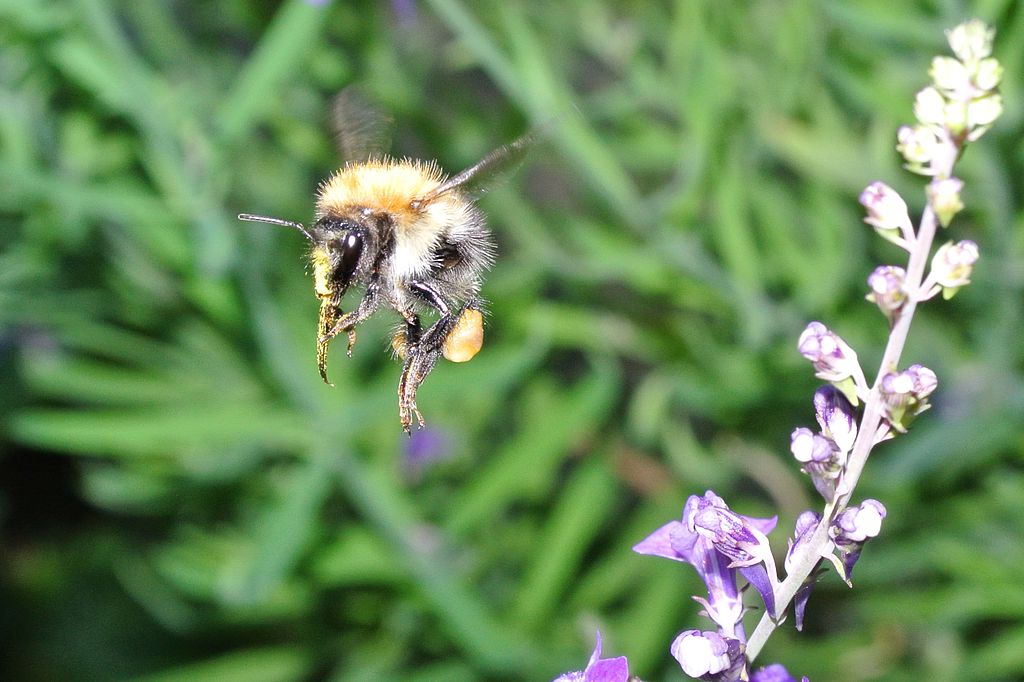We're open daily! View holiday hours
Science News
Bumblebees Reach New Heights
February 10, 2014
by Molly Michelson

“A classic problem is how bumblebees can sustain their body weight… If you do calculations, just assuming they are a simple aircraft with fixed wings, i.e. they’re not oscillating, you get very different kinds of answers that they can’t fly. And of course, we have witnessed their amazing flight.”
Robert Dudley should know bumblebee flight. A professor at UC Berkeley, he did his PhD on the aerodynamics of the bumblebee. And he’s been studying flight ever since—in hummingbirds, non-flying insects, and of course, bumblebees.
Last week, Dudley and Michael Dillion, of the University of Wyoming, published a study on just how well these large bees can fly at high altitudes.
You might not be surprised that bumblebees can fly and hover at high altitudes—if you’ve done any mountain hiking, they are a familiar sight. But Nature News sets up the problem of high altitude flying:
At higher elevations, reduced air density would make it harder to create lift with each wing beat, and a fall in oxygen levels would push the limits of the bees' metabolic systems.
Dudley is familiar with the improbabilities of bumblebee flight. But just how high can these insects fly? To find out, Dillon captured four male bumblebees at over 10,000 feet (3,250 meters) in the mountains of the Sichuan province in China. He then placed them in a plexiglass chamber and slowly pumped air out—mimicking conditions at higher and higher altitudes.
The bumblebees could take the thinner and thinner air. All of the bees could fly at 24,272 feet (7,400 meters) and two of the bees were able to fly at simulated heights of 29,525 feet (9,000 meters). That’s higher than Mt. Everest!
The researchers found that “stroke amplitude and not wingbeat frequency is the primary means of compensation for overcoming the aerodynamic challenge” of high altitude flying, according to the study. In other words, to compensate for the thin air, the bumblebees didn’t beat their wings faster, they took wider strokes.
The Smithsonian says this not only solves another mystery in bumblebee flight, but can help with the insects’ survival.
Understanding the flight limits of bees and other insects and animals could help scientists predict the ways climate change might impact their ranges.
Stay tuned! Science Today recently interviewed Robert Dudley for a video on flight.
Image: Pahazzard/Wikipedia